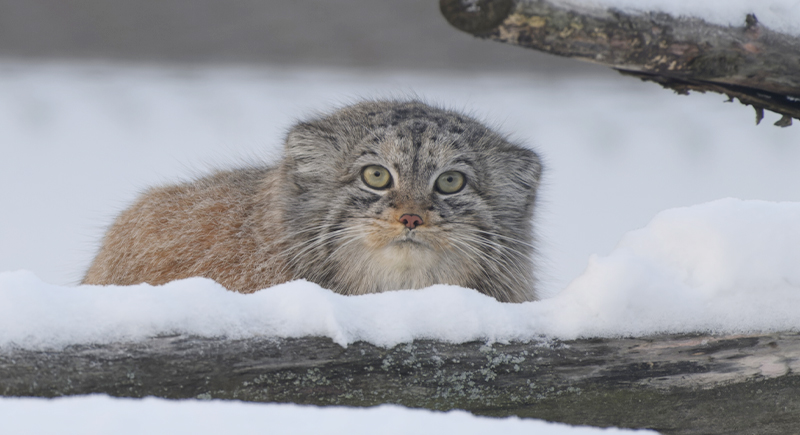What Is a Pallas’s Cat and Why Is This Photo of One so Important?
In the high snowfields of Arunachal Pradesh, a hidden camera recently caught something no one had documented there before: a Pallas’s cat. Stocky, long-haired, and often mistaken for an angry housecat, this wild feline—also known as the manul—had never been photographed in the state. The trap snapped the cat at nearly 16,400 feet and provided the first visual proof of its presence in this corner of the eastern Himalayas.
That single frame carries weight. Until now, scientists had only confirmed the species in Sikkim, Bhutan, and eastern Nepal. Its appearance in Arunachal pushes the known boundary of its range and adds to what researchers are learning from a large survey led by WWF India and the state’s Forest Department. In West Kameng and Tawang, their network of cameras has been catching rare predators on film. These predators include snow leopards, clouded leopards, marbled cats, and leopard cats.
A Cat Built for Extremes
The Pallas’s cat is often mistaken for an oversized, grumpy housecat, but its features are perfectly suited to survival. Scientists estimate they diverged from the leopard lineage around 5.2 million years ago. This makes them one of the oldest surviving wild cat species. Their short legs and stocky build may look clumsy, yet they are excellent for sneaking close to prey. Their flat skulls and high-set eyes help them scan their surroundings while staying low to the ground, even when snow piles up around them.
Beyond appearance, their behavior is full of surprises. Instead of climbing trees or running fast, Pallas’s cats rely on patience and camouflage. They can flatten themselves against the ground until they look like a rock. This is a clever way to hide from predators such as steppe eagles. Their hunting style is equally sneaky as they wait until dusk to ambush rodents, small birds, and lizards. By preying heavily on rodents, they play an important role in balancing ecosystems where they live.
Sounds and Survival
Unlike domestic cats, the Pallas’s cat doesn’t meow. Their vocalizations range from low growls to strange honks and chirps, and when frightened, their yelps sound more like a small dog than a cat. This unusual communication, combined with their elusive habits, makes them one of the least studied wild felines.
They also have unusual ways of handling the cold. Sitting directly on snow would be brutal, so they use their bushy tails as natural foot warmers. These adaptations let them survive in places where temperatures can swing from -58°F (-50°C) in winter to more than 90°F (32°C) in summer, a range few animals can withstand.
Why the Photo Matters

Image via iStockphoto/Wirestock
The Arunachal Pradesh photo confirms the presence of the Pallas’s cat in India’s eastern Himalayas, and fills a major gap in scientists’ understanding of its range. It also underscores how important the region is as a biodiversity hotspot, with multiple wild cats and other species surviving at elevations once thought impossible. Non-feline discoveries from the same survey, such as a Himalayan wood owl at 13,450 feet (4,100 meters) and a grey-headed flying squirrel at 14,760 feet (4,500 meters), prove that a wide range of animals are adapting to extreme conditions.
The Pallas’s cat is currently listed as Least Concern on the IUCN Red List, but scientists caution that its true numbers are difficult to measure because of its secretive behavior and excellent camouflage. It still faces risks from poaching, shrinking habitat, and poisoning tied to rodent control programs. Conservation groups argue that long-term monitoring and stronger protection of alpine habitats are essential to keep this elusive species secure.